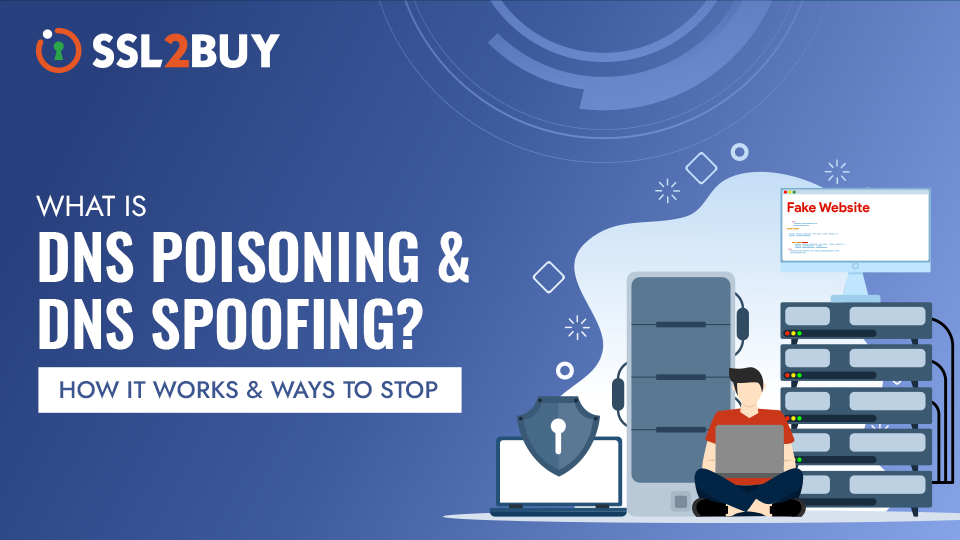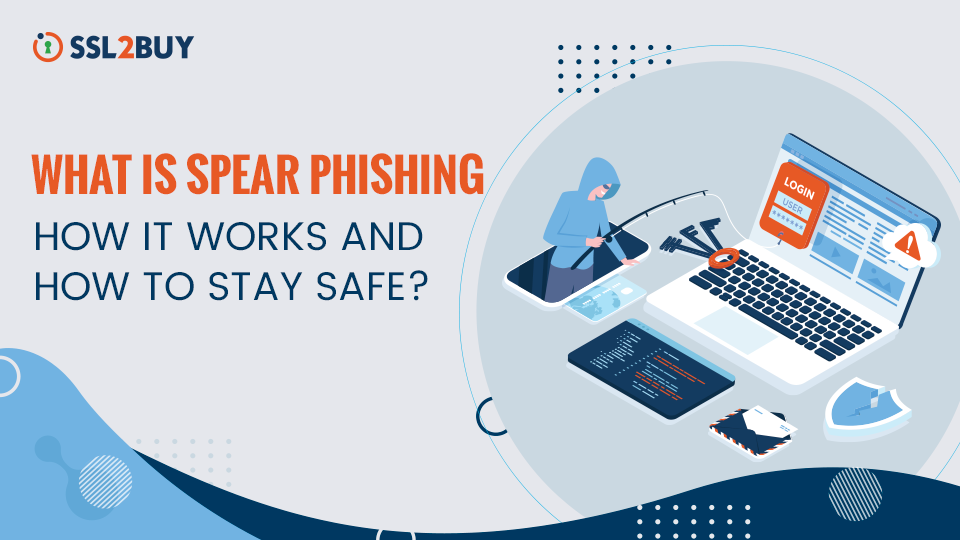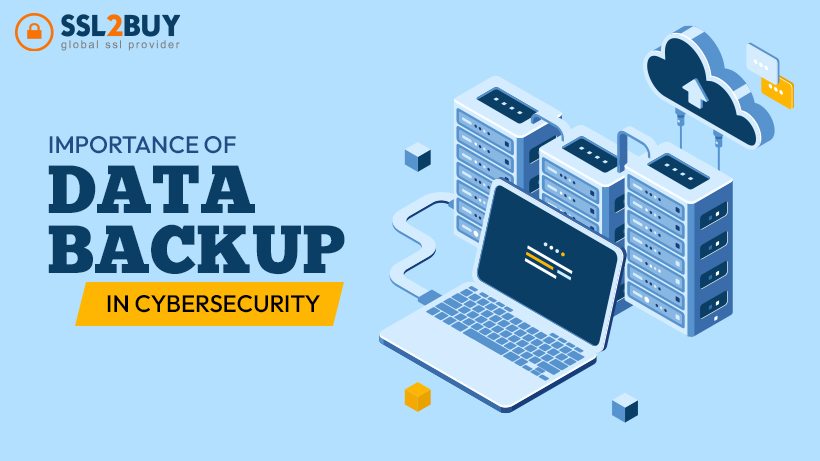
Learn about DNS Cache Poisoning That Redirects Users to Fake Sites for Data Theft and Malware
When you type a familiar website address in your web browser, you expect to land on a particular webpage, but what if you are redirected to a fake website designed to steal your sensitive data? Cyber attackers trick your internet settings into sending you to fake websites instead of the real ones. This is called a DNS spoofing or poisoning attack which exploits vulnerabilities in the Domain Name System (DNS) to compromise the entire network. The worst part of this attack is that it can go undetected for long periods while affecting individuals and organizations alike.
In this article, we’ll break down how DNS poisoning works, its dangers, real-world examples, and how to stay protected.
What is DNS Spoofing (DNS Poisoning) & How Do Attackers Exploit DNS Weaknesses?
The Domain Name System (DNS) acts as the internet’s phonebook that can translate human-friendly domain names like example.com into machine-readable IP addresses. Attackers can exploit weaknesses in this system through DNS spoofing, also known as Domain Name System poisoning, to redirect users to malicious websites without their knowledge.
DNS spoofing broadly refers to any type of attack that manipulates DNS responses, causing users to resolve a malicious attacker-controlled IP address instead of a legitimate domain. DNS cache poisoning is one of the most dangerous forms of this attack, as it allows an attacker to inject fake DNS records into the resolver cache. As resolvers temporarily hold results of the DNS query for faster lookups, poisoning just one resolver can misdirect multiple users in a network, potentially affecting an entire network.
This attack can be carried out in multiple ways, and man-in-the-middle (MITM) interception is one of the widely used. In this method, the attacker manipulates DNS responses in transit or by exploiting vulnerabilities in DNS servers to insert false records. Once poisoned, users can be unknowingly redirected to phishing sites, malware-hosting pages or rogue services that enable large-scale traffic interception.
Unlike traditional cyber threats that require compromising individual devices, DNS poisoning exploits infrastructure-level weaknesses which makes it a stealthy and highly effective attack method.
How Does DNS Poisoning Work to Trick and Manipulate DNS Resolvers?
Its important to first understand how DNS works before diving deep into how a DNS poisoning attack happens. Whenever you enter a domain like example.com into your browser your device doesn’t know its IP address. So to get the IP address your request is sent to a recursive DNS resolver which follows the below steps.
- Check Local Cache – If the resolver has recently fetched the domain’s IP, it serves the cached response.
- Query an Authoritative DNS Server – If no cached record exists, the resolver contacts a series of DNS servers, including root and TLD (Top-Level Domain) servers, until it reaches the authoritative DNS server that holds the correct IP.
- Store and Respond – Once the resolver gets the correct IP, it caches the response for future use and sends it back to the user’s device.
DNS poisoning works by corrupting the DNS resolver process, specifically by injecting false records into the resolver’s cache. When a poisoned record is stored, every subsequent request for that domain gets redirected to the attacker’s chosen IP.
Step 1: Intercepting or Manipulating DNS Queries
When DNS resolvers try to fetch IP addresses by querying authoritative DNS servers, attackers take advantage of this and launch a Man-in-the-Middle (MITM) attack to intercept DNS requests between the client and the resolver to modify responses before they reach the user. Attackers later on flood the resolver with fake responses that appear legitimate and trick the resolver into accepting incorrect IP mappings.
Step 2: Injecting Malicious Records into DNS Cache
Once an attacker successfully spoofs a DNS response, the poisoned record gets stored in the resolver’s cache. Since DNS servers temporarily retain query results, all future users requesting that domain will receive the malicious IP instead of the real one. This is why DNS cache poisoning is so effective as it persists until the cache expires or is manually cleared.
Step 3: Redirecting Users to Malicious Sites
After poisoning the resolver, attackers can deploy phishing pages that mimic real websites to steal login credentials and spread malware by directing users to drive-by download sites or Intercept sensitive data through rogue proxy servers.
This means that once a resolver is poisoned, every user in that network requesting the compromised domain is redirected, making the attack highly scalable.
Why is DNS Poisoning Dangerous for Businesses and Individuals?
The reason why DNS poisoning is risky is because it can compromise internet navigation at a fundamental level unlike malware or phishing attacks that target individual devices. It affects the core internet infrastructure on which millions of users rely for internet usage. Some serious threats that can arise:
-
Widespread Impact with Minimal Effort
Once a DNS resolver is poisoned, every user querying the affected domain gets redirected to the attacker’s chosen destination. This means a single attack can compromise entire corporate networks, ISPs or even country-wide DNS services. Since many organizations rely on shared public resolvers like Google DNS (8.8.8.8) or Cloudflare DNS (1.1.1.1) poisoning one widely used resolver could have massive global implications.
-
Persistence in DNS Caching
DNS records are stored in caches for a set Time-to-Live (TTL) which determines how long they remain valid. Attackers often manipulate TTL values to extend the lifetime of a poisoned record, keeping users trapped on fake sites for prolonged periods even after the initial attack ends. Some poorly configured resolvers may retain poisoned records indefinitely unless manually cleared.
-
Invisible to End Users
DNS poisoning leaves no obvious signs for users, unlike traditional cyberattacks. Victims type in a legitimate URL and see a website that looks identical to the real one which makes them more likely to enter sensitive data. Since the browser’s address bar still displays the correct domain name, even savvy users may not detect the fraud.
-
Facilitates Large-Scale Cybercrimes
Attackers use DNS spoofing for various malicious purposes:
- Credential Theft: Due to the lack of built-in verification in DNS, an attacker can easily carry out UDP-based exploitations for manipulating DNS queries by injecting malicious responses, thereby redirecting users to phishing sites that mimic banking or email login pages.
- Malware Distribution: Directing users to fake software update pages that install trojans or ransomware.
- Surveillance & Traffic Interception: State-sponsored attackers have used DNS poisoning to censor or monitor traffic by redirecting users to government-controlled servers.
- Denial-of-Service (DoS) Attacks: Poisoned DNS entries can redirect high-traffic domains to unresponsive or malicious servers, effectively taking them offline.
- DNS Tunneling: DNS servers are exploited for establishing covert communication channels, which are then used for exfiltration of sensitive data and bypassing security controls.
-
Exploits Fundamental DNS Weaknesses
By design, a DNS does not have a native authentication or encryption mechanism. This makes it susceptible to IP spoofing, which allows an attacker to impersonate a legitimate DNS server, but security enhancements like DNSSEC (DNS Security Extensions) have been developed that use cryptographic signatures to mitigate this, although the adoption is still low.
Detection and Prevention Strategies for DNS Cache Poisoning Attacks
To detect a DNS poisoning attack it requires active monitoring, anomaly detection and some forensic analysis of DNS traffic. DNS spoofing operates silently which makes early detection important.
-
DNSSEC (DNS Security Extension) Validation Checks
If a DNSSEC-enabled domain suddenly fails validation, it may indicate a tampered response. Organizations can enforce strict DNSSEC checking to detect poisoned records before they propagate.
-
Regularly Flush DNS Caches
DNS resolvers caches responses for efficiency but a poisoned cache can persist until manually cleared. Periodically flushing the DNS cache reduces the risk of long-term poisoning. To flush DNS for various operating systems, you can use the following commands:
- Windows: “ipconfig /flushdns”
- Linux: “sudo systemctl restart systemd-resolved” or “sudo resolvectl flush-caches”
- macOS: “sudo dscacheutil -flushcache”
- On DNS servers: Use rndc flush for BIND or restart the resolver service.
-
Monitor DNS Traffic for Anomalies
Unusual DNS activity such as a surge in requests for the same domain with different IP responses can indicate poisoning attempts. Security teams should deploy monitoring tools such as Splunk or ELK for DNS query analysis to detect suspicious patterns. By analyzing DNS logs, organizations can quickly identify unexpected domain redirections and mitigate threats before widespread impact.
-
Patch and Secure DNS Servers Regularly
Many DNS poisoning attacks exploit vulnerabilities in outdated DNS server software. Make sure that your DNS resolvers and authoritative servers receive regular security updates and the latest patches. Also, all unnecessary DNS services should be disabled to reduce attack surface and rate limiting should be enabled to prevent brute forcing of DNS spoofing attacks.
Real-World Examples of DNS Spoofing Attacks
Numerous high-profile cyberattacks have happened due to DNS poisoning which leads to data breaches, surveillance or large-scale phishing campaigns. Some real-world examples include:
-
Brazilian Bank Phishing Attack
In 2010, cybercriminals targeted Brazilian online banking users by poisoning ISP DNS caches. Users were redirected to fraudulent clone banking websites instead of the legitimate site. These clone banking websites stole user credentials and were effective because:
- Users saw the correct domain name in the browser, making the fake site look authentic.
- The poisoned DNS records persisted for several days, affecting thousands of customers.
- Two-factor authentication (2FA) was not widely used at the time, making credential theft easier.
-
Cryptocurrency Theft via DNS Hijacking ( MyEtherWallet Attack)
In April 2018, hackers compromised Amazon Route 53, a widely used DNS service, and redirected MyEtherWallet (a cryptocurrency wallet provider) users to a phishing site. The attackers:
- Modified BGP (Border Gateway Protocol) routes to hijack Amazon’s DNS traffic.
- Redirected users to a clone site that stole Ethereum’s private keys.
- Emptied victim’s wallets, resulting in over $150,000 in stolen funds.
This attack demonstrated how DNS poisoning combined with BGP hijacking can enable large-scale financial fraud.
How Can Organizations Prevent DNS Poisoning & DNS Spoofing Attacks?
Here’s how organizations can defend against DNS poisoning and DNS spoofing attacks.
-
Implement DNSSEC
DNSSEC (Domain Name System Security Extensions) adds cryptographic authentication to DNS responses using digital signatures. It makes sure that DNS records are digitally signed by authoritative DNS servers which prevents attackers from injecting forged responses. DNSSEC-enabled resolvers verify the authenticity of DNS responses using public key cryptography. If a response is tampered with or forged, the validation process fails, and the request is rejected.
-
Use Trusted & Secure DNS Resolvers
You can use trusted public DNS services like Cloudflare (1.1.1.1), Google (8.8.8.8) and Quad9 (9.9.9.9) which offer better security and real-time filtering against poisoned DNS responses. Internal devices in an organization can be configured to use these trusted third-party DNS resolvers instead of local ISP-provided ones that might lack security controls.
-
Enable Encrypted DNS and Response Rate Limiting
Usage of DNS over HTTPS (DoH) and DNS over TLS (DoT) can encrypt DNS queries which will make it harder for attackers to intercept and modify the DNS requests and responses. You should enforce encrypted DNS settings across browsers, operating systems and enterprise networks. Along with that, you can consider enabling Response Rate Limiting (RRL) which is a security feature that helps in mitigating DDoS attacks by limiting the rate of responses sent to a client.
-
Restrict Open DNS Resolvers
Many DNS poisoning attacks target misconfigured open resolvers that accept queries from external networks. To mitigate this:
- Disable open resolver functionality.
- Implement query restrictions based on internal IP ranges.
- Use DNS query validation techniques like DNSSEC and Response Policy Zones (RPZ).
-
Conduct User Awareness Training
Even with strong technical defenses, end users remain a critical attack vector in DNS poisoning exploits. Attackers often create convincing phishing pages that look identical to legitimate websites, tricking users into entering sensitive credentials. Hence proper user awareness should be done with a primary focus on the usage of secure DNS resolvers, reporting unexpected redirections, checking website certificates, etc.
Conclusion
DNS poisoning is a silent yet highly effective attack that compromises users and organizations at a fundamental level. Attackers try redirecting users to phishing sites or distributing malware by exploiting weaknesses in DNS caching and resolution. DNS was designed when security was not one of the priorities hence, modern solutions like DNSSEC, encrypted DNS and DNS filtering can help defend against DNS-related threats. However, organizations must adopt a proactive approach, combining technical safeguards with continuous monitoring and user education.



